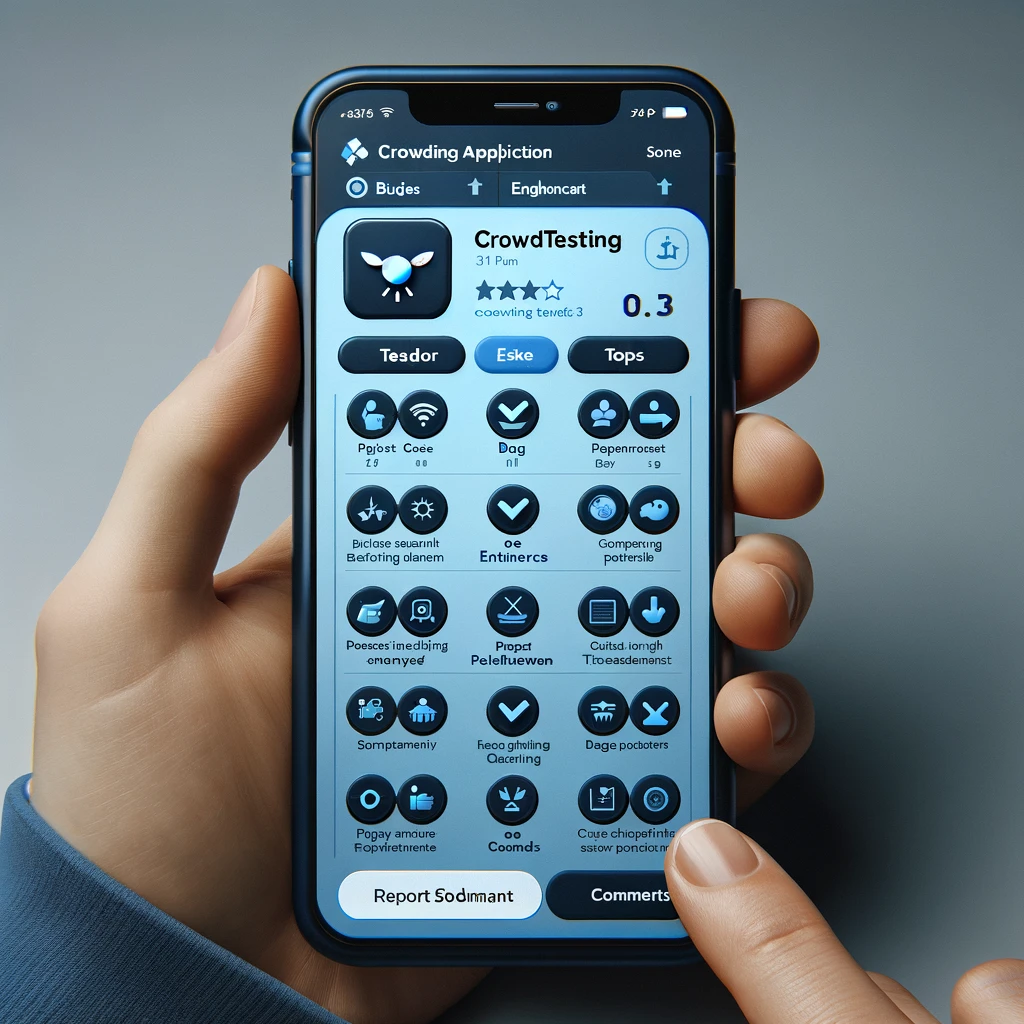The ecosystem of mobile applications is an arena of fierce competition, where iOS apps have carved out a reputation for their superior design, fluid performance, and adherence to stringent quality criteria. iOS application testing embodies an intricate dance of precision and adaptability, a testament to the unseen yet pivotal role it plays in the fruition of an app that users are not only content to use but are delighted and compelled to engage with. Given that modern app stores are brimming with a plethora of options, the significance of meticulously executed iOS app testing is undeniable. Both automated and manual testing serve as the dual engines that power the flight of an app from concept to excellence. This article ventures into the art and science of finding the optimal equilibrium between these two testing approaches, elucidating how their harmonious interplay can elevate an iOS application from the realm of the ordinary to the heights of exceptional acclaim and user satisfaction.
The Essentials of iOS App Testing
Within the walls of the development lab, iOS app testing unfolds as a rigorously systematic endeavor aimed at scrutinizing every aspect of mobile applications—from their core functionality and user interface usability to their steadfast consistency. Through rigorous testing protocols enacted within highly controlled testing environments, potential issues are brought to light and meticulously addressed. The overarching motives that underpin this process are multifaceted: to authenticate the app’s conformance to its meticulously drafted specifications, safeguard the integrity of user data, and systematically root out any glitches, bugs, or performance hiccups. In an era where applications are increasingly complex and users are quick to critique, the imperative of thorough testing stands unchallenged. Upon the bedrock of conscientiously executed testing rests the towering success—or unexpected downfall—of an app; it distinguishes an app that swiftly wins user allegiance from one that struggles with attrition brought about by suboptimal performance or instability that frustrates and turns away its users.

Unlocking the Power of Automated Testing
The realm of automated testing has emerged as a linchpin in state-of-the-art strategies for testing iOS applications, ushering in a new epoch where developers harness the potential of algorithms and machine precision. This methodology thrives on the automation of repetitive and labor-intensive testing tasks, thus liberating developers to channel their intellectual energies toward more complex and creatively demanding facets of app development. Automated testing distinguishes itself through its promotion of efficiency, persistent reliability over successive development cycles, and an expansive test coverage that human testers might fail to match. Instrumental to the efficacy of iOS automated testing efforts are tools and frameworks such as XCTest and Appium, which empower developers with the means to craft and reliably execute an array of automated testing procedures. Particularly potent in regression, load, and performance testing, automated testing shines brightest in the context of large-scale projects where code needs to be continuously integrated and updated—a scenario where its prowess in handling high-frequency test scenarios is unrivaled.
The Human Touch: Manual Testing for iOS Apps
Amidst the technological marvels of automation, we find the artistry and perceptive discernment of manual testing, where the human touch imparts a level of malleability and observational finesse that remains beyond the purview of machine-driven processes. Manual testing flourishes in the landscape of the unpredictable, where exploratory tests, nuanced user-experience considerations, and spontaneous test scenarios come into play. It is here that the invaluable faculties of human intuition and resourceful creativity become indispensable, enabling testers to emulate authentic user interactions with an app, thus unveiling issues that might not surface during automated testing regimes. For instance, simulating the initial user experience, navigating complex user interfaces, or rigorously evaluating apps rich in diverse content are arenas where the discerning eyes and sage judgment of experienced manual testers are paramount. Here, the human perspective becomes crucial, as testers think laterally, exploring beyond the expected to uncover potential problems that could elude even the most sophisticated automation algorithms.
Balancing Automated and Manual Testing: A Strategic Approach
The quest for optimality in iOS app testing demands the strategic amalgamation of automated and manual testing—each with its innate strengths—to forge a comprehensive testing approach. When automation serves as the stalwart guardian of systemic verification, adeptly handling the routine and methodical components of testing, manual testers step into the spotlight with their intuitive grace, dissecting the more subjective nuances of usability, aesthetic appeal, and overall user engagement. This duality of testing is not merely about coexistence but about the creation of a synergistic relationship where each methodology complements the other, leading to processes that are both streamlined and exhaustive. The narratives stemming from real-world case studies are replete with examples of businesses that benefitted from embracing both automated and manual testing tactics, thereby yielding robust, trustworthy, and captivating iOS applications.
Cost-Effectiveness in iOS App Testing
Any discourse on the process of iOS app testing would be incomplete without deliberating the economic aspects inherent to the choice between automated and manual testing methods. Automated testing may present itself with seemingly high initial costs borne from tool procurement and environment setup, but its capability to conduct simultaneous multiplicity of tests reduces the need for repetitive manual effort, which translates into significant savings as projects evolve. Conversely, manual testing begins as a cost-sensitive choice but can accrue steep expenses over time due to its intensive need for human involvement, particularly so in the instance of expansive project scopes. Within this financial conundrum lies a critical decision-making junction for businesses: they must discerningly evaluate long-term returns on investment to determine the deployment of their fiscal resources, seeking to strike an economically viable balance that not only conserves financial expenditure but augments the value quotient through unerring quality assurance.
Enhancing App Quality with the Right Testing Mix
In the complex tapestry of iOS app development, ensuring supreme app quality requires a careful calibration of testing strategies, where choices regarding the right amalgamation of automated and manual testing are made with discernment. The pursuit of this calibrated synergy is not merely superficial; rather, it’s an endeavor that can substantially enhance the dictates of quality assurance. An iOS app’s journey to greatness is underpinned by rigorous testing disciplines, such as exhaustive test coverage across various device and OS combinations, scrupulous bug tracking systems that leave no error uncharted, and an uncompromising commitment to elevating the user experience to its zenith. Employing the surgical precision of automated tests to administer routine and repetitive checks, juxtaposed against the discerning human insight gained during explorative manual testing, cultivates a holistic approach. This balanced protocol opens avenues for sophisticated development, drives user-centric enhancements, and paves the way for flawlessly refined app releases. It’s a delicate dance of integrating diverse testing methodologies that reflect the vast array of user interactions an app may encounter, assuring that with each update and iteration, the end product aligns ever closer to the pinnacle of functional excellence and user delight.
Adapting Testing Methods to Your Business Size and Needs
The dynamic nature of business operations, ranging from sprightly startups to established corporate giants, necessitates a bespoke approach to iOS app testing. It is not a ‘one size fits all’; rather, it must be a tailored suit that fits the unique silhouette of each enterprise’s needs and goals. For the nimble startup, an agile and adaptive manual testing process may synchronize seamlessly with their swift developmental iterations, providing immediate insights with each pivot and shift. In contrast, larger corporate entities might find solace in the expansive embrace of automated testing frameworks, harnessing their monumental potential to manage extensive app ecosystems efficiently. For businesses across the spectrum, the advent of crowd testing supplements the conventional dichotomy of automated and manual testing. This innovative approach introduces a new dimension that encapsulates real-world feedback loops and diverse user perspectives. Implementing the pragmatic blend of these varied testing methodologies becomes a nuanced journey, unique to each enterprise’s milieu, confronting distinct challenges, capitalizing on specific opportunities, and aspiring towards bespoke objectives. Identifying and implementing the fitting mixture of both precision and intuition can serve as the cornerstone to solidifying a business’s repute within the competitive realm of iOS applications.
Staying Ahead of the Curve: Automation in the Evolving Tech Landscape
Remaining vanguards in the perpetually innovative and fast-paced tech environment mandates a proactive stance on the trajectory of iOS app testing automation. With an industry predicated on constant evolution, it becomes crucial for businesses to not just stay apprised but also to be ahead in leveraging emergent tools and methodologies within their testing protocols. A strategic foresight is necessary to harness these technological winds, shifting the sails towards more efficient, reliable, and advanced automation techniques. Objectively, preparing and refining a testing strategy to anticipate and encompass impending iOS updates and breakthrough developments equates to future-proofing an application. It embraces a preparedness philosophy that can readily adapt to and adopt new paradigms, aligning an app with both present and future market expectancies and technological frontiers. As such, fostering an ethos of adaptability within the testing teams—imbuing them with an ethos of continuous evolution, learning, and reflexivity—is quintessential. It’s this very culture that will empower businesses to ensure their testing strategies and, by extension, their applications remain resilient, pertinent, and thriving in the metamorphic landscape of tomorrow’s technological prospects.
Conclusion
The investigative journey through the intricacies of both automated and manual testing methodologies renders a lucid understanding of their conjoined significance in the lifecycle of an iOS app. This discernment underscores the irrefutable truth that achieving an optimal balance between these two testing modalities can drastically bolster an app’s deployment success and market performance. Far from being a simple binary choice, it is the consummate integration, a forging of the best aspects of both worlds, that creates an alchemical fusion. This duality, where the intricate nuances of manual testing artfully intersect with the relentless speed and repeatability of automated testing, erects the stage for applications that do more than just satisfy user expectations—they transcend them. It is this calibrated confluence that can fortify an app’s presence within the competitive ecosystem, lending it both eminence and endurance amidst the app marketplace.
Regardless of where you find yourself in the continuum of app testing—whether you’re poised to refine an established strategy or setting the first stone on this intricate path—this marks a pivotal moment to reconsider your tactical direction. We extend an invitation to engage with professional testing services tailored to the unique fabric of iOS app requirements. By partnering with a specialist that possesses a nuanced understanding of balancing automated precision with manual insights, you stand to significantly enhance your app’s quality, enrich user satisfaction, and solidify a commanding digital presence. Together, let’s stride towards an era of unparalleled excellence in app quality, forging robust and strategic testing solutions that can herald your iOS application’s success.




